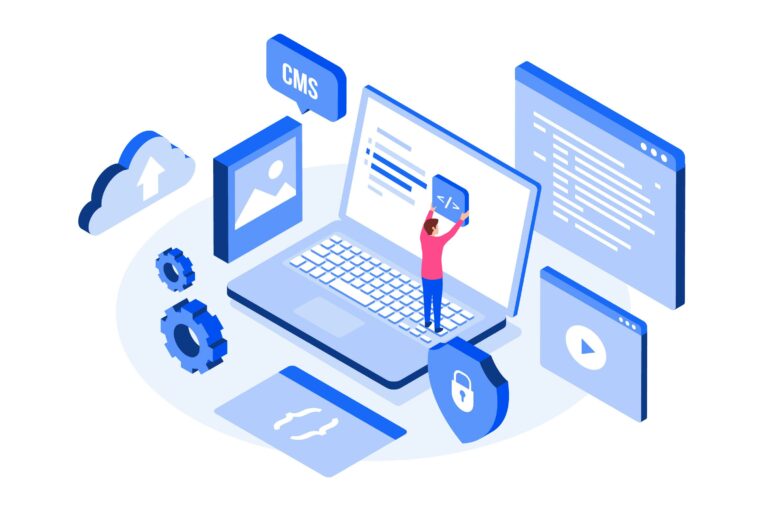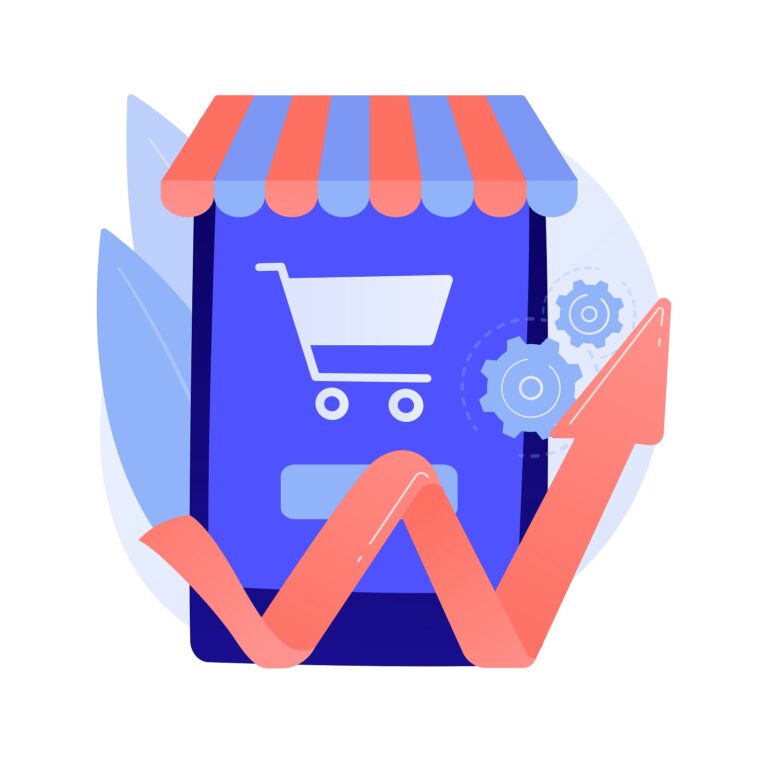AI Trading Software: A Comprehensive Guide to Benefits and Usage
In this comprehensive guide, we delve into the world of AI trading software, exploring its benefits, workings, types, and how to select the right one for your needs. We also examine its future trends and potential challenges. Whether you’re a seasoned trader or just getting started, this article aims to enhance your understanding of AI trading software and its transformative impact on the trading industry. So, buckle up and let’s embark on this enlightening journey through the fascinating landscape of AI and trading.
I. Introduction
Investing and trading in the financial markets is no longer the sole realm of Wall Street professionals or financial whizzes. The digital revolution, driven by incredible advances in technology, has opened the doors for anyone to get involved. The key player in this game-changing shift? Artificial Intelligence.
As computers become more intelligent, the traditional methods of trading are getting a significant facelift, making room for a new player in town – AI trading software. This powerful technology is transforming the financial landscape, altering how we trade, when we trade, and even why we trade.
A. Brief Overview of AI Trading Software
So, what exactly is AI trading software? In a nutshell, it’s a fusion of artificial intelligence and financial market trading. It’s software designed to learn from data patterns, making educated predictions and executing trades autonomously.
AI trading software does this by employing machine learning and complex algorithms that allow it to analyze vast amounts of data at lightning speed, far beyond human capacity. The software then uses this analysis to identify patterns, trends, and potential trading opportunities.
But it doesn’t stop there. AI trading tool is also capable of making decisions based on this data, executing trades when certain criteria are met, and adapting its strategy as market conditions change. This offers traders the opportunity to stay ahead of the market, capitalizing on insights and trends faster than their human counterparts could.
B. Evolution and Growth of AI in Trading
AI trading software is not a new phenomenon. Its roots can be traced back to the 1980s, when Wall Street first started to explore computer-based trading. But it’s only in the last decade that AI and machine learning have truly started to revolutionize the trading industry.
With the surge in computational power and data availability, AI trading software has become more sophisticated, more accurate, and more accessible. It’s moved from the confines of Wall Street and is now available to individual investors and traders.
While initially, the adoption of AI trading software was slow, mainly due to skepticism and regulatory concerns, its impact is undeniable today. A study by the U.K.’s Financial Conduct Authority found that algorithmic trading now accounts for about 70% of all trading volume in developed markets.
As we stand on the precipice of a new era in trading, AI’s role promises to be transformative. From enabling real-time data analysis to predicting market trends with increased accuracy and even automating trades, the future of trading with AI looks nothing short of exciting.
In the next sections, we’ll dive deeper into how AI trading tool works, its benefits, and how it’s currently being used in the financial markets. We’ll also explore some of the leading AI trading software platforms and discuss how you can effectively use AI in your trading strategy. So buckle up, and let’s embark on this journey into the future of trading.
II. Understanding AI Trading Software
Before we delve into the benefits and applications of AI trading software, it’s crucial to gain a robust understanding of what this technology is all about. Let’s start with a closer look at the term ‘AI Trading Software’ and then explore how it operates.
A. What is AI Trading Software?
AI Trading Software, often referred to as algorithmic trading or automated trading software, represents a significant leap in trading technology. It’s a sophisticated tool that leverages the power of artificial intelligence and machine learning to analyze, strategize, and execute trades in the financial markets.
Unlike traditional trading methods that rely on human decision-making, AI trading software automates the process, making it efficient, objective, and capable of operating 24/7. This software can be programmed to follow specific trading strategies, making buying and selling decisions based on parameters defined by the trader.
But here’s where it gets even more interesting. AI trading software can also learn and adapt. Through machine learning algorithms, it’s capable of observing patterns, learning from historical data, and even refining its trading strategies over time to improve performance.
In essence, AI trading tools is like having a tireless, emotionless, highly skilled trader at your disposal, ready to pounce on any potential trading opportunities the second they arise.
B. How Does AI Trading Software Work?
The underlying principle of AI trading software is relatively simple – it’s about automating the trading process based on a set of predefined rules or strategies. However, the technology behind it is far from simple. Let’s break it down.
Data Analysis: At its core, AI trading software is a data-crunching machine. It consumes vast amounts of information – from price fluctuations and volume changes to economic news and market trends. Using complex algorithms, the software sifts through this sea of data to identify patterns and indicators that could signal a trading opportunity.
Strategy Execution: Once the software identifies a potential trade, it will evaluate it against the trading strategy’s parameters. If the opportunity fits within these parameters, the software will execute the trade, purchasing or selling the relevant securities.
Machine Learning: This is where AI trading software separates itself from regular automated trading tools. Through machine learning, the software learns from each trade it executes. It analyzes the outcome, adjusts its strategies based on the results, and becomes more effective over time. This continuous learning cycle enables the software to adapt to changing market conditions and improve its trading performance.
Risk Management: AI trading software is also programmed to manage risk. It can be set to limit losses by executing trades to exit positions if the price reaches a certain level. Additionally, it can balance portfolios, diversify investments, and ensure the trading strategy aligns with the trader’s risk tolerance.
In a nutshell, AI trading software streamlines the trading process, makes it more efficient, and brings a level of precision and speed that’s simply unattainable for human traders. As we move further into the digital age, the use of this technology in trading is set to become the norm rather than the exception.
III. Types of AI Trading Software
Artificial intelligence has seeped into many areas of trading, giving rise to a variety of AI trading software. Each type serves different purposes, caters to different trading styles, and brings unique benefits to the table. Let’s explore the four main types of AI trading tools: algorithmic trading systems, robo advisors, predictive analytics tools, and trading bots.
A. Algorithmic Trading
First up, we have algorithmic trading systems. At their core, these platforms use complex mathematical models and formulas to make high-speed decisions and transactions in the financial markets. These algorithms can be based on a simple set of rules, like buying a particular stock when its 50-day moving average goes above the 200-day moving average. However, they can also be much more complex, considering factors such as the order size, timing, price, or even the market’s reaction to a trade.
What sets these systems apart is their speed and precision. They can process vast amounts of data and execute trades in fractions of a second, far faster than any human trader. This speed gives algorithmic trading systems a significant edge in markets where fractions of a second can mean the difference between profit and loss.
B. Robo Advisors
Robo advisors are AI-powered financial advisors, offering automated, algorithm-driven financial planning services with minimal human intervention. These platforms collect information from clients about their financial situation and future goals through an online survey, and then use this data to offer advice and automatically invest client assets.
The advantage of robo advisors lies in their accessibility and affordability. They typically require lower minimum investments than human financial advisors, making professional financial advice accessible to the masses. Moreover, they’re available 24/7, providing constant, real-time financial advice.
C. Predictive Analytics Tools
These tools utilize AI, statistics, and big data to analyze current data and historical facts, enabling traders to make predictions about future market trends. Using machine learning, these tools learn from an array of variables and continuously improve their predictions over time.
Predictive analytics tools are invaluable for their ability to forecast market trends, giving traders crucial insights that can inform their trading decisions. However, like all predictions, they’re not foolproof and should be used as part of a broader trading strategy.
D. Trading Bots
Trading bots, or trading robots, are software programs that interact directly with financial exchanges, placing buy or sell orders on your behalf, based on a pre-defined trading strategy. They monitor market price movement and react to a set of pre-programmed rules.
Trading bots are ideal for high-frequency trading and for those who want to have a presence on the markets 24/7 without being physically present. They remove emotion from trading, prevent rash decisions based on fear or greed, and provide a level of speed and consistency in reacting to market changes.
In a rapidly evolving financial market, these various forms of AI trading software offer traders a competitive edge, improving efficiency, accuracy, and profitability. However, it’s essential for traders to understand their workings, benefits, and risks to make the most of these powerful tools.
IV. Benefits of Using AI Trading Software
The use of artificial intelligence in trading has reshaped the landscape of the financial markets. AI trading software offers several compelling benefits, including speed and efficiency, enhanced data analysis, risk management, reduction of human errors, and personalization. Let’s delve deeper into each of these advantages.
A. Speed and Efficiency
In the lightning-fast world of trading, speed is of the essence, and this is one area where AI trading software truly shines. These systems can analyze vast quantities of data and execute trades in fractions of a second, far faster than any human trader could. This ability to quickly process and act upon market data can greatly enhance trading efficiency and increase the potential for profits.
B. Data Analysis Capabilities
AI trading software can handle and analyze an almost infinite amount of data. They can take into account various factors like price trends, economic indicators, news events, and even social media sentiments, in real-time. By processing this vast array of data, they can identify trading patterns and opportunities that would be virtually impossible for a human to detect.
C. Risk Management
One of the most significant benefits of AI trading software is its ability to manage risk. It can automatically adjust to market changes and even execute stop-loss orders if the market moves against a trade. By doing so, it helps to limit losses and protect trading capital. Furthermore, the use of back-testing allows traders to assess the risk level of their trading strategies based on historical data before implementing them in the real world.
D. Reducing Human Errors
AI trading software eliminates the possibility of human errors that can occur from manual trading. This includes mistakes made from misreading data, missing a trade due to a distraction, or making poor decisions based on emotional responses such as fear or greed. With AI software, trades are made based on pre-set parameters, eliminating emotional trading and reducing the potential for costly mistakes.
E. Personalization and Adaptability
AI trading software can be tailored to fit an individual’s trading style, risk tolerance, and goals. Moreover, with machine learning capabilities, these systems can adapt and learn from the data they process. This means they can improve their strategies over time, adjusting to new trends and market changes.
By leveraging the power of AI, traders can enhance their trading strategies, making them more efficient, data-driven, and adaptable to market changes. However, it’s crucial to remember that while AI trading software offers numerous benefits, it doesn’t guarantee profits. As with all trading strategies, it’s essential to understand the tools you’re using, the market you’re trading in, and the risks involved.
V. Selecting the Right AI Trading Software
As with any investment in technology, selecting the right AI trading software requires a thorough understanding of your needs, a careful evaluation of available options, and a clear estimation of potential returns. This task can seem daunting at first, but it becomes manageable when you break it down into a series of steps.
A. Factors to Consider
A strategic approach to choosing AI trading software starts with defining the criteria that matter most to you. These may vary based on your trading experience, investment goals, risk tolerance, and the time you can commit to managing your trades. Here are some key factors you might consider:
1. Ease of use: Navigating complex interfaces can be time-consuming and confusing. Look for software that has a user-friendly design, clear instructions, and a well-structured interface.
2. Quality of customer support: No matter how advanced or straightforward a tool may be, there will likely come a time when you need help. Adequate customer support, through chat, email, or phone, can be a lifesaver.
3. Performance history: AI software should have a track record of successful trades and high returns. Be wary of tools that promise high returns without historical data to back up their claims.
4. Data used for decision-making: Some software may rely on real-time data, historical data, or a mix of both. The nature and quality of the data it uses to make decisions can greatly influence the tool’s effectiveness.
5. Compatibility: The software should be compatible with your existing trading platforms. If you trade on multiple platforms, the software should ideally be able to integrate with all of them.
6. Adaptability: The markets are always changing, and your AI trading software should be able to adjust its algorithms and strategies in response to these shifts.
7. Transparency: Knowing how the AI makes decisions can help you understand and trust the tool better. Look for software that offers clear explanations of its processes and methodologies.
8. Personal trading style and risk tolerance: Are you an aggressive trader, or do you prefer a more conservative approach? Your AI software should align with your trading style and the level of risk you’re comfortable with.
B. Costs and ROI of AI Trading Software
Once you’ve considered these factors, it’s essential to weigh the potential costs and returns of your chosen AI trading software. This requires a careful evaluation of the software’s pricing structure, as well as a realistic assessment of its potential to deliver returns.
1. Cost structure: AI trading software may charge a flat fee, a monthly subscription, or a percentage of profits earned. Some may offer a free trial period or a money-back guarantee. Take the time to understand the pricing structure and any hidden costs that might arise.
2. Potential ROI: While it’s challenging to predict exact returns, considering the software’s past performance, its capacity for efficient trading, and its ability to manage risk effectively can provide some insight into potential ROI. Remember to factor in the time you save by automating your trades, which can be used to explore new investment opportunities.
3. Risk management: A significant part of assessing potential ROI involves evaluating the software’s risk management capabilities. Software with robust risk management tools can prevent substantial losses and secure profits more consistently.
Investing in AI trading software is not a guarantee of profits, but a tool to enhance your trading strategy. Remember, a well-informed investor is a successful investor. Always conduct your due diligence before making any investment decisions.
VI. Future Trends of AI in Trading
Just as AI has transformed countless industries, it continues to reshape the landscape of trading. From predictive analytics to the use of big data and machine learning, the future of AI in trading is both exciting and challenging. Let’s delve into these trends and their implications.
A. Predictive AI Trading Tools
Predictive AI trading tools are becoming more sophisticated and capable, thanks to improvements in machine learning and data analysis. These tools are designed to analyze vast amounts of data, recognize patterns, and make predictions about future market movements.
For instance, they can sift through news articles, social media posts, and economic indicators to gauge market sentiment and predict how it will impact specific stocks or the market as a whole. These predictive tools are transforming the trading landscape by providing traders with valuable insights that can help them make more informed and timely decisions.
However, it’s essential to understand that even the most sophisticated predictive tools are not infallible. The financial markets are influenced by a multitude of factors, many of which can be unpredictable. Hence, predictive tools should be used as part of a balanced and diversified trading strategy.
B. The Role of Big Data and Machine Learning in AI Trading
Big data and machine learning are two key drivers of the AI revolution in trading. Big data refers to the vast amounts of data now available from a variety of sources, including market data, social media, news outlets, and other economic indicators. Machine learning, on the other hand, is a branch of AI that involves teaching computers to learn from this data and make decisions.
In the context of AI trading, machine learning algorithms use big data to identify patterns and trends that might not be apparent to human traders. These algorithms can analyze millions of data points in seconds, allowing them to execute trades based on this analysis much faster than a human could.
The increasing integration of big data and machine learning in trading software is set to further revolutionize the trading landscape by providing even more sophisticated, timely, and accurate trading insights and execution.
C. Potential Challenges and Solutions
While AI trading holds immense promise, it’s not without challenges. For instance, the complexity of financial markets can make it difficult for AI tools to always make accurate predictions. Additionally, AI trading tools require significant computational power and can be expensive to use and maintain.
Another key challenge is the risk of over-reliance on AI. While these tools can provide valuable insights, they should not replace sound financial judgment and a well-thought-out trading strategy.
To overcome these challenges, it’s important for traders to understand the limitations of AI and use these tools as part of a balanced strategy. Regularly reviewing and adjusting your AI tools can also help ensure they continue to meet your trading needs effectively.
As for the cost and computational challenges, ongoing advances in technology and cloud computing are making AI tools increasingly accessible and affordable for individual traders. In the coming years, we can expect to see a wider adoption of AI trading tools as they become even more sophisticated, user-friendly, and cost-effective.
As we navigate this exciting new frontier, remember that the goal of AI in trading isn’t to replace human traders but to enhance our capabilities, providing us with powerful tools to make better, more informed trading decisions.
VII. Conclusion
As we close this comprehensive exploration of AI trading software, it’s time to reflect on what we’ve learned and consider the future of this exciting technology. From enhancing our trading capabilities to predicting market trends, AI trading software holds vast potential for transforming the way we trade.
A. Recap and Key Takeaways
AI trading software refers to computer programs that use artificial intelligence and machine learning algorithms to analyze financial markets, identify trading opportunities, and execute trades. It can take the form of algorithmic trading software, robo advisors, predictive analytics tools, and trading bots.
Benefits of using AI trading tools include increased speed and efficiency, superior data analysis capabilities, better risk management, reduction of human errors, and personalization and adaptability. However, the effectiveness of these tools relies heavily on selecting the right software that aligns with your trading objectives, budget, and risk tolerance.
When choosing AI trading software, important factors to consider include the software’s capabilities, ease of use, costs, and ROI. Given the variety of AI trading software available in the market, this decision requires careful consideration and research.
As for the future, AI trading tool is set to become more sophisticated and capable thanks to advances in predictive analytics, big data, and machine learning. However, we must remain cognizant of potential challenges, such as the risk of over-reliance on AI, and ensure we use these tools as part of a balanced trading strategy.
B. Final Thoughts
The world of trading is continually evolving, and AI represents the next frontier in this evolution. As AI continues to advance, so will its influence on trading. However, as we embrace this new technology, we must remember that it is not a magic bullet. It should be seen as a tool in our trading arsenal, designed to enhance, not replace, our trading skills and judgement.
Navigating the world of AI trading can be complex, but with careful planning, research, and an open mind, you can leverage this powerful technology to your advantage. Here’s to the exciting future of AI trading!
Remember, the success of AI trading relies not just on the technology itself, but also on how we use it. Keep learning, stay updated with new developments, and remain adaptable. After all, in trading as in life, the only constant is change.







